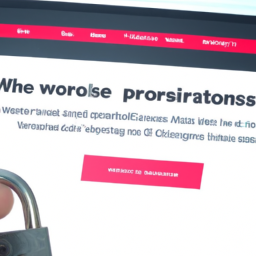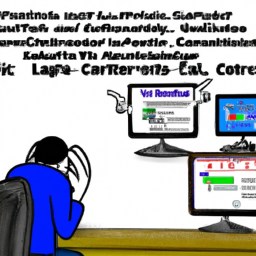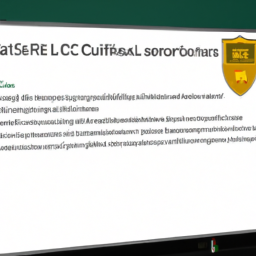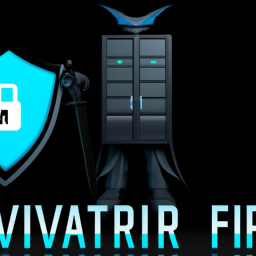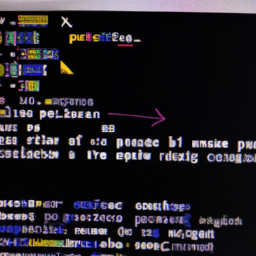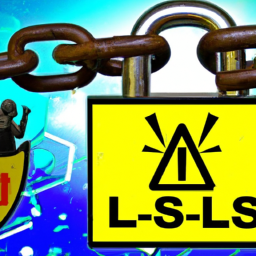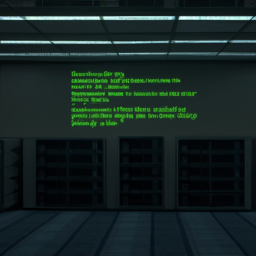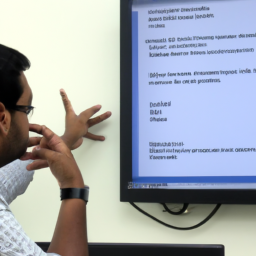Have you ever experienced the frustration of a server crashing at a critical moment? It always seems to happen when you least expect it, doesn’t it?
Well, fear not, because there is a solution that can help you avoid these dreaded downtime situations. Enter redundancy – the secret weapon in the fight against server failures.
As an experienced server administrator, you understand the importance of server availability. Downtime can cost your business valuable time, money, and reputation. That’s where redundancy comes into play. By implementing redundant systems and components, you can greatly reduce the risk of server failures and ensure continuous operations.
In this article, we will delve into the basics of redundancy in server management. We will explore how redundant systems work, the different types of redundancy, and the best practices for planning and maintaining a redundant infrastructure.
So, strap in and get ready to learn how redundancy can be your knight in shining armor when it comes to avoiding server downtime.
Key Takeaways
- Redundancy is crucial in avoiding server downtime and ensuring uninterrupted server operation.
- Redundant systems and components, such as power supplies, storage devices, and network interfaces, minimize the risk of server failures.
- Failover mechanisms automatically switch to redundant systems in case of failure, reducing downtime.
- Regular maintenance, monitoring, and testing of backup servers are essential to minimize the risk of server failures and ensure continuous operations.
Understanding the Importance of Server Availability
You need to understand why server availability is so important and how it can prevent costly downtime.
In today’s digital landscape, businesses rely heavily on their servers to store and deliver critical data and services. Any disruption or failure can have a significant impact on productivity, customer satisfaction, and ultimately, the bottom line.
Redundancy strategies play a crucial role in ensuring server availability. By implementing redundant components, such as power supplies, network connections, and storage devices, businesses can minimize the risk of downtime. Redundancy not only provides backup options in case of hardware failures but also allows for maintenance and upgrades without impacting server availability.
Understanding the impact of server downtime and the basics of redundancy in server management is essential for any business striving to maintain a robust and reliable IT infrastructure. This knowledge will help you make informed decisions to prevent and mitigate potential disruptions.
The Basics of Redundancy in Server Management
By implementing backup systems, you can ensure uninterrupted operation of your servers. Redundancy plays a crucial role in server management as it provides a safety net against potential downtime.
There are several advantages of redundant systems that can’t be overlooked. Firstly, redundancy eliminates single points of failure by distributing the workload across multiple servers or components. This means that if one server or component fails, the others can seamlessly take over, minimizing downtime.
Secondly, redundant systems offer improved fault tolerance, ensuring that even if one part of the system fails, the overall performance remains unaffected. Redundancy strategies for server management can include implementing redundant power supplies, network connections, and storage devices. By taking these measures, businesses can significantly reduce the risk of server downtime.
Moving forward, let’s explore the implementation of redundant systems and components to further enhance server availability.
Implementing Redundant Systems and Components
Implementing redundant systems and components ensures uninterrupted server operation, providing a safety net against potential interruptions. By utilizing redundant hardware, such as backup power supplies, storage devices, and network interfaces, organizations can minimize the risk of downtime due to hardware failures. Additionally, failover mechanisms can be implemented to automatically switch to redundant systems in the event of a failure. This ensures that critical services remain operational and minimizes the impact on users.
To better understand how redundancy works, consider the following table:
| Redundant Component | Purpose |
|---|---|
| Redundant power supplies | Provide backup power in case of a power supply failure |
| Redundant storage devices | Ensure data is not lost in case of a storage device failure |
| Redundant network interfaces | Maintain network connectivity even if one interface fails |
With redundant systems and components in place, the risk of server failures can be greatly reduced. This allows organizations to provide reliable and uninterrupted services to their users.
Moving forward, let’s explore how organizations can further minimize the risk of server failures.
Reducing the Risk of Server Failures
One effective way to minimize the risk of server failures is through regular maintenance and monitoring, ensuring that any potential issues are identified and addressed proactively. By adhering to a strict maintenance schedule, system administrators can reduce server downtime and prevent failures that could disrupt critical operations.
For instance, conducting routine server check-ups allows organizations to detect any hardware or software problems before they escalate into major issues. This proactive approach enables them to address these problems promptly, ensuring continuous operations and minimizing the impact on users. Additionally, monitoring server performance in real-time helps identify any abnormal behavior or warning signs, allowing for immediate action to be taken.
By implementing these practices, organizations can significantly reduce the risk of server failures and guarantee a reliable and seamless experience for their users.
Transitioning into the subsequent section, ensuring continuous operations with redundancy further enhances server reliability and resilience.
Ensuring Continuous Operations with Redundancy
Ensuring uninterrupted operations can be achieved by incorporating redundancy measures into server systems. Continuous monitoring is essential in maintaining redundancy. By constantly monitoring the server environment, potential issues can be identified and resolved before they cause any downtime.
Disaster recovery is another crucial aspect of ensuring continuous operations. By having redundant systems in place, if one server fails, the workload can seamlessly shift to another server, minimizing any disruption.
Markdown bullet list:
- Peace of mind: Redundancy provides a sense of security, knowing that even if a server fails, operations will continue without interruption.
- Increased reliability: Redundancy measures greatly reduce the risk of server downtime, ensuring that critical business processes can continue without any hiccups.
- Cost-saving in the long run: While implementing redundancy measures may require upfront investment, it can save businesses from potential financial losses caused by server downtime.
To maintain continuous operations, it’s crucial to follow best practices for redundancy planning and maintenance.
Best Practices for Redundancy Planning and Maintenance
To maintain continuous operations, you should regularly evaluate and update your redundancy plan. Planning strategies and maintenance techniques play a crucial role in ensuring your systems can handle unexpected events.
For example, a multinational e-commerce company might regularly test their backup servers to ensure they can seamlessly handle a sudden surge in website traffic during a major sale event. This involves simulating high loads and monitoring the performance and reliability of the backup servers.
Additionally, it’s important to regularly review and update the redundancy plan to account for any changes in technology or business requirements. This includes assessing the effectiveness of current redundancy measures, identifying potential weaknesses, and implementing improvements.
By following these best practices, you can minimize the risk of server downtime and maintain uninterrupted operations.
Frequently Asked Questions
How does redundancy in server management impact overall system performance?
Redundancy in server management plays a crucial role in enhancing overall system performance. By implementing redundant systems and components, such as backup servers, power supplies, and network connections, potential points of failure are minimized. This ensures that even if one component fails, the system can seamlessly switch to the redundant one, minimizing downtime.
To optimize redundancy planning and maintenance, regular monitoring, testing, and updates are essential. This guarantees maximum effectiveness and minimizes the risk of system failures.
Are there any limitations or drawbacks to implementing redundant systems and components?
When it comes to implementing redundant systems and components, there are indeed limitations and drawbacks to consider.
One limitation is the cost involved in setting up and maintaining redundant systems, as it requires additional hardware, software, and resources.
Additionally, incorporating redundancy can increase complexity, making it more challenging to manage and troubleshoot issues.
Lastly, there is a risk of over-reliance on redundancy, as it may create a false sense of security and lead to complacency in other areas of server management.
What are some common challenges faced when reducing the risk of server failures?
Reducing the risk of server failures can pose common challenges that even experienced professionals encounter. One of the major hurdles is identifying all potential points of failure and implementing appropriate measures to mitigate them. This requires a deep understanding of the server infrastructure and the ability to anticipate possible issues.
Additionally, maintaining redundancy without compromising performance and cost-effectiveness is another delicate balance to strike. Risk reduction demands meticulous planning, constant monitoring, and proactive troubleshooting.
How can redundancy planning and maintenance be optimized for maximum effectiveness?
To optimize redundancy planning and maintenance for maximum effectiveness, start by conducting a thorough analysis of your server infrastructure. Identify critical components and potential points of failure. Implement redundant systems, such as backup power supplies and mirrored data centers.
Regularly monitor and test these redundant systems to ensure they’re functioning properly. Additionally, establish a comprehensive maintenance schedule that includes routine inspections, updates, and repairs. By taking a proactive and meticulous approach, you can minimize the risk of server failures and maximize the effectiveness of your redundancy planning and maintenance efforts.
Is there a specific industry or type of organization that can benefit the most from implementing redundancy in server management?
A specific industry or type of organization that can greatly benefit from implementing redundancy in server management is the banking and financial sector. These organizations deal with large volumes of sensitive data and require constant access to their servers for transactions and customer services.
By having redundant servers and backup systems in place, they can ensure uninterrupted operations and protect against potential downtime that could result in financial losses and damage to their reputation. Implementing redundancy in server management is crucial for the smooth functioning of such organizations.
Conclusion
In conclusion, the role of redundancy in avoiding server downtime is paramount. By understanding the importance of server availability and implementing redundant systems and components, you can reduce the risk of server failures and ensure continuous operations.
Best practices for redundancy planning and maintenance are essential in maintaining a seamless and secure server environment. Remember, redundancy is not just a luxury, but a necessity in today’s fast-paced digital world. Safeguard your servers with redundancy, and stay ahead of the game.



















